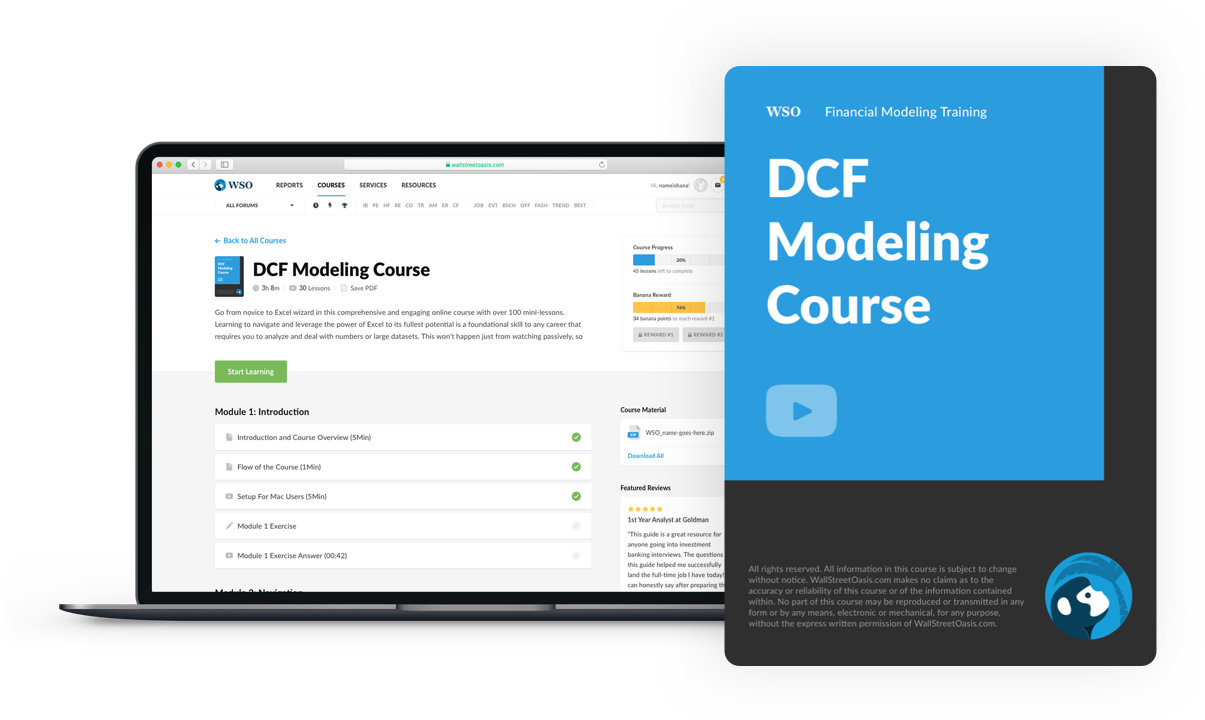Treasury Bills (T-Bills)
Short-term debt instruments that are issued by the government whenever they need money for a short period. They can only be issued by a country’s central government.
What Is a Treasury Bill (T-Bill)?
Treasury bills are short-term debt instruments issued by the government whenever they need money for a short period. A country's central government can only issue them, and the interest they provide depends on the market forces prevailing in a country.
Investors typically lend money to the government when they buy a T-bill. The U.S. Government uses the money from investors to fund its ongoing expenses, including infrastructural projects, salaries, defense, and healthcare expenses.
These bills can be characterized by their maturity period, which has a maximum period of 364 days. Therefore, we can categorize them as money market instruments based on their maturity period. They are issued in three maturities- 91 days, 182 days, and 364 days.
These government bonds are typically sold at a discount from the par amount (also known as the face value). Whenever a bill matures, the investor gets paid its par amount.
When the par value exceeds the purchase price of the bill, the resulting difference is the interest received by the investor.
It is also vital to note that these bills are particularly popular among income-seeking investors. In addition, these securities are favored and suitable for risk-averse investors looking for a reliable source of income.
Nevertheless, they do not offer high-interest rates compared to other types of securities.
Key Takeaways
-
T-bills are short-term debt securities issued by a country's central government to raise funds for short periods, typically ranging from a few days to one year.
-
T-bills serve as a vital tool for governments to raise short-term funds for various expenditures, including infrastructure projects, salaries, defense, and healthcare expenses.
-
T-bills are considered low-risk investments backed by the full faith and credit of the government, making them attractive options for conservative investors seeking capital preservation and modest returns.
-
Open market operations involving T-bills help regulate money supply, control inflation, and stabilize the economy by influencing interest rates and liquidity levels in financial markets.
What Influences T-Bill Prices?
The prices of T-bills are influenced by factors such as economic conditions, market sentiment, and monetary policy. Understanding these influences is crucial for investors looking to make informed decisions in the fixed-income market. Some of the factors are as follows:
1. Maturity period
The time until the maturity of a T-bill has a direct impact on its yield. For instance, a one-year T-bill usually holds a higher rate of return than a three-month one since longer maturities signify an additional risk for investors - the higher the risk, the greater the reward.
For example, a $2,000 Treasury bill can be sold for $1,970 for a three-month maturity, $1950 for a six-month maturity, and $1,900 for a twelve-month maturity. As you can see, investors will ask for a higher interest rate to compensate them for lending their money for a longer timeframe.
2. Monetary policies
The Federal Reserve's monetary policy directly affects T- bill prices. An increase in the Federal Funds rate will tend to make other debt securities more attractive for investors, lowering the demand for T-bills.
As a result, regarding the direct relationship between the price level and demand for a commodity, lower demand for these bills will lead to a rise in its interest rate.
3. Inflation
A rise in the price level is also a factor in determining interest rates. Usually, when the inflation rate in a country is high, the interest rate on bills will also tend to increase. The same applies to periods of falling price levels, which will lead to a lower yield on bills.
Usually, when the inflation rate is higher than the T- bill discount rate, demand for those types of investments will fall since it becomes uneconomical to use them as investment vehicles. Lower demand will then tend to decrease the price of bills, raising their yield.
4. Risk tolerance
The degree of risk tolerance of investors also impacts the price of T-bills.
If a country's economy is thriving, job opportunities are on the rise, and the inflation rate keeps decreasing, this will instill stability and safety from investors' perspective. This will encourage them to seek alternative, riskier investment strategies that yield higher returns.
Treasury bills vs. Treasury bonds
Treasury bills (T-Bills) and Treasury bonds are both fixed-income securities issued by the U.S. Department of the Treasury, but they differ in terms of maturity, yield, and investment characteristics.
Understanding the distinctions between T-Bills and Treasury bonds is essential for investors seeking to diversify their portfolios and manage risk effectively in the bond market. The differences are as follows:
Treasury bills
- T- bills are sold at a discounted cost and mature at face value
- They are negotiable debt instruments and highly liquid
- They are issued as a promissory note or a paperless computerized framework
- T- bills' major players include banks, firms, individuals, and monetary foundations
Treasury bonds
- They are long term-investment bonds that are issued by the public authority to fund state-based projects
- They are a low-risk investment instrument, thereby paying a low return to their investors
- T-bonds ensure a specific rate of return from the investment
- The principal amount is paid alongside interest at the maturity date, and interest payments are made twice a year
| Component | Treasury Bills | Treasury Bonds |
|---|---|---|
| Meaning | They are short-term money market instruments issued by the public authority | They are long-term capital market instruments issued by public authorities |
| Fluctuations in Price | The cost of Treasury bills is relatively more stable, as they have a lower maturity period. | The cost of Treasury bonds fluctuates more due to their longer maturity period. |
| Different Types | 91-day bills, 181-day bills, and 364-day bills | Corporate bonds, zero-coupon bonds, municipal bonds |
| Payment of Interest | Issued at a discounted price | Not issued at a discounted value. Instead, it pays interest twice a year with the face value at maturity. |
| Period to Maturity | Issued with a maturity of one year or less | Issued with a longer maturity period from 10 years and above |
From the above comparison and description of those two government securities, it is clear that bills differ from Treasury bonds in terms of time for maturity period.
Note
Treasury bonds are long-term capital market securities with a maturity time of 10 years or more, whereas T-bills are short-term money instruments with a maturity time of one year or less.
T-bills and bonds are safer investments than other options since they are backed by a public authority.
While T- bills are given at discounted cost and mature at face value, T- bonds pay interest twice a year. Moreover, no securities are issued for fundraising state projects.
How to Purchase Treasury Bills
Investing in Treasury bills (T-bills) offers a safe and accessible way to grow your money. In this guide, we'll explore the simple steps to purchase Treasury bills, providing you with the knowledge to start investing confidently:
Step 1: Open a CDS Account
The first step is to open a CDS account with the Central Bank, allowing them to monitor who holds which government securities. Once the CDS account is set up, the investor can invest in multiple bills and bonds.
To open a CDS account, the user should already have a bank account with the bank they intend to buy the bills from. The next phase is to collect a mandate card from the Central Bank or any branches and fill it in.
Note
Opening a CDS account with the Central Bank is a prerequisite for purchasing Treasury bills, providing investors with a centralized platform for managing government securities and facilitating secure transactions.
In this document, the contact information and details of the user's bank account should be provided.
Accompanied with the mandate card should be passport-sized photographs of the person, which must be certified and stamped by a representative from their commercial bank. Lastly, a clear copy of the National Identity Card should be submitted.
Step 2: Select the way you want to invest
Since these bills are offered weekly, with maturities of 91 days, 182 days, and 364 days, the investor should choose from one of those options before getting started. The person must then decide on maturity length after researching recent interest rates.
This will give them a clear idea of the return on investment and how long they will have to commit their funds.
Step 3: Complete and Submit an Application Form
Once the person is committed to invest, they must complete a treasury bill application form, which includes information about the bill they intend to purchase. Information includes the maturity period, the face value amount they want to receive upon maturity, and the issue number.
The application form also contains the investor's personal information, such as names, telephone numbers, CDS account numbers, and the source of the funds being invested (local or offshore).
Note
When filling out the application form, the individual has two options. This will determine how much they're going to pay for the bill and the return they shall receive at maturity. Those two options consist of the interest competitive rate or the non-competitive/average rate.
It is essential to note that those who are going for the competitive interest rate must ensure that the interest rates they are willing to receive don't exceed the cutoff rate imposed by the central bank since those who submit interest rates above the cutoff are not entitled to bills.
On the other hand, investors who choose the non-competitive rate are 100% entitled to receive the bills from the auction. The setback from this option is that they will always obtain lower returns than those who opted for the interest-competitive rate.
The last section of the application form is the rollover instructions. These are making it easier for existing investors to reinvest by using their returns to purchase additional government securities.
Step 4: Get the Auction Results
Following the application form submission, investors need to visit the central bank/central bank website to determine if their applications were accepted and see how much they owe for their bills.
Step 5: Payment
Next is to proceed with the payments of the bills. This can be done at the financial institution itself.
It is vital to note that successful applicants who fail to execute the required payments shall be banned from undertaking future investments in government securities.
Advantages of Treasury Bills
Treasury bills (T-bills) offer several advantages for investors and governments alike. Here are some of the key advantages of investing in T-bills:
1. Safety and Security
Treasury bills are considered one of the safest investments available because they are backed by the full faith and credit of the government issuing them.
As they are issued by the government, the risk of default is extremely low, making T-bills an attractive option for conservative investors seeking capital preservation.
2. Liquidity
T-bills are highly liquid investments, meaning they can be easily bought and sold in the secondary market before their maturity date.
Investors can convert T-bills into cash quickly without incurring significant transaction costs, providing flexibility to adjust their investment portfolios as needed.
Note
T-bills are available with maturities of 4 weeks (1 month), 13 weeks (3 months), 26 weeks (6 months), and 52 weeks (1 year). They are issued through a competitive bidding process at regular auctions held by the U.S. Department of the Treasury.
3. Fixed Income
T-bills provide a fixed income stream in the form of interest payments, which are typically paid at maturity. This predictable income stream can be attractive for investors seeking steady returns without exposure to market volatility.
Because of their short maturities, T-bills are less sensitive to changes in interest rates compared to longer-term bonds. This makes them less vulnerable to interest rate fluctuations and suitable for investors concerned about interest rate risk.
5. Tax Advantages
Interest income earned from Treasury bills is exempt from state and local income taxes, providing potential tax advantages for investors in high-tax jurisdictions. While T-bill interest is subject to federal income tax, it is often lower than the tax rate on other types of investment income.
Disadvantages of Treasury Bills
While Treasury bills (T-bills) offer numerous advantages, they also come with certain disadvantages that investors should consider. Here are some of the key disadvantages of investing in T-bills:
1. Low Returns
One of the primary drawbacks of T-bills is their relatively low returns compared to other investments such as stocks, corporate bonds, or longer-term government bonds. Also, T-bills have short maturities and low risk, they typically offer lower yields, which may not keep pace with inflation over the long term.
T-bills don't provide adequate protection against inflation. While they offer a fixed interest rate, this rate may not fully compensate investors for inflationary pressures over time. Inflation erodes the purchasing power of the interest income earned from T-bills, potentially reducing the real return on investment.
Note
Be aware of potential drawbacks such as low returns, inflation risk, and reinvestment challenges. While T-bills offer stability, balancing their limitations with long-term wealth goals is key for informed decision-making.
3. Reinvestment Risk
When T-bills mature, investors face reinvestment risk, especially if prevailing interest rates have declined. Investors may struggle to reinvest the proceeds from maturing T-bills at similarly attractive interest rates, potentially lowering future income and returns.
4. Interest Rate Risk
Although T-bills have short maturities, they are still subject to interest rate risk. If interest rates rise after purchasing T-bills, their market value may decline, leading to potential capital losses if investors need to sell them before maturity.
This risk is more pronounced for investors who buy T-bills in the secondary market rather than holding them to maturity.
While T-bills offer safety and stability, they may not maximize long-term wealth accumulation compared to other investment options.
Uses of Treasury Bills
T-bills are short-term debt securities, issued by governments and serve various purposes in financial markets and the broader economy. Here are some of the uses of Treasury bills:
1. Short-term borrowing for the government: T-bills help the government meet immediate cash needs for its day-to-day operations, such as building necessary infrastructure, making payments for goods and services, and paying employee salaries.
2. Money market investment: T-bills are a popular investment option in the money market. They offer investors a low-risk investment with the full backing of the government. Moreover, they are issued at a discount to their face value and provide investors with a guaranteed return on investment at maturity.
3. Hedging against inflation: T-bills can be used as a hedge against inflation since they usually offer a higher return compared to inflation rates, protecting the investors' purchasing power.
Note
Treasury bills are essential in the formation of the yield curve, which plots the yields of fixed-income securities with different maturities. The yields on T-bills are often used as benchmarks for short-term interest rates and can provide insights into market expectations and economic conditions.
4. Diversification: T-bills can be used as a low-risk investment option for diversifying an investment portfolio. They are often used in conjunction with equities and other more volatile investments to reduce overall portfolio risk.
5. Central bank's tool for monetary policy: Central banks use T-bills as a policy tool to manage monetary policy. Open market operations, where T-bills are bought and sold to regulate money supply, are used to control inflation and stabilize the economy.
6. Promissory notes with a repayment guarantee: T-bills are promissory notes with a repayment guarantee. Central governments issue these notes, and they are considered low-risk investments due to their stable return and backing by the issuing government.
Treasury Bill (T-Bill) FAQs
These bills are issued for terms ranging from a minimum of 4 weeks (1 month) to 52 weeks (1 year).
They are purchased for a price less than or equal to their par value. Investors will usually receive interest which is obtained by the difference between the price they paid for the T- bills and their face value.
In that case, the investor will not receive his interest payments. If they decide to sell a treasury bill to get the money early, the value of the bill is no longer the difference between the payment made and the bond’s face value.
It all depends on the period an investor is willing to invest his money. If the money is needed in the short term, then a Treasury bill is the best choice due to its shorter maturity.
On the other hand, if an investor is looking for a longer time horizon, then Treasury bonds with maturities of ten years and over might be better.
This can be explained by the fact that they are issued by the U.S. Department of the Treasury (bonds, notes, and bills). They are risk-free in nature because of the backing of the U.S. government.
Treasury stock is recorded using the cost method, and its cost is shown at the conclusion of the stockholder's equity section of the balance sheet.
Treasury stock will then be deducted from the amounts in Stockholder’s Equity.

Everything You Need To Master DCF Modeling
To Help You Thrive in the Most Prestigious Jobs on Wall Street.
Free Resources
To continue learning and advancing your career, check out these additional helpful WSO resources:



or Want to Sign up with your social account?